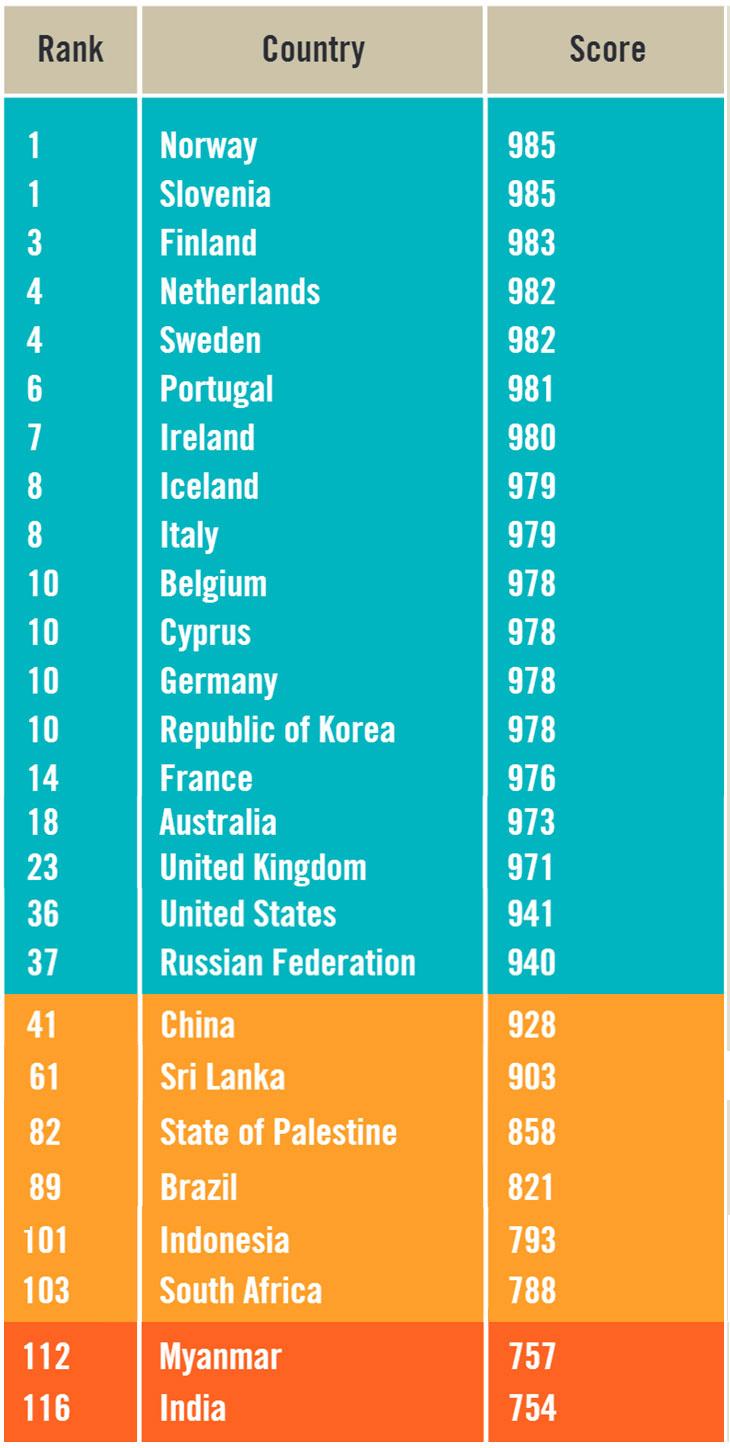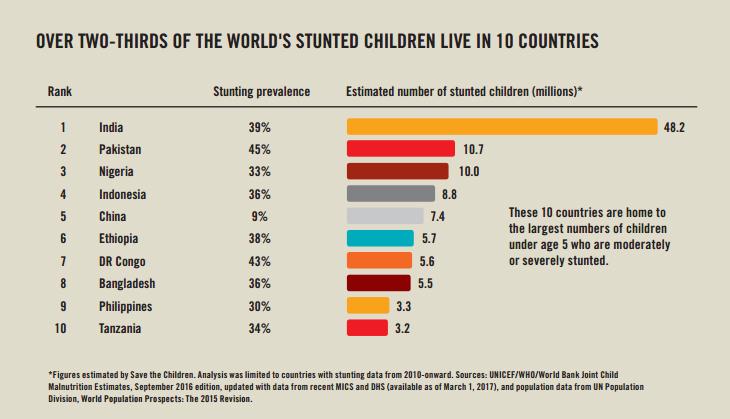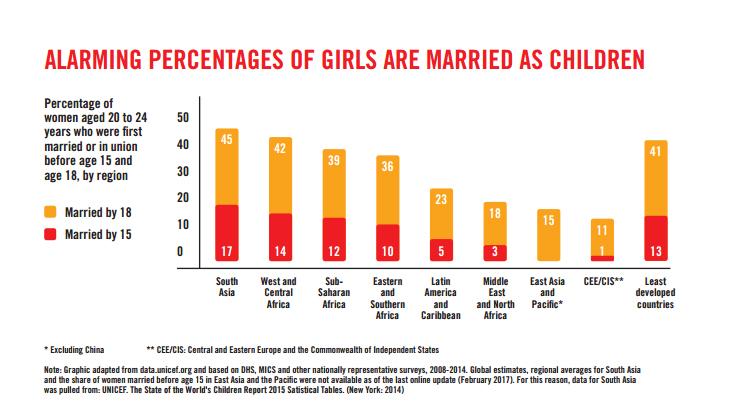Cause for concern: India only 116th on global child welfare index

India may be one of the fastest growing economies in the world, but the country's ranking on global social indices have always been worrisome.
In fact, it is safe to say that while India concentrates hard on achieving economic growth, it may be ignoring growth in more important aspects like social welfare and human development indices.
A few days after a World Bank report revealed the worrying figures about gender disparity in India's workforce (India was ranked 120th among the 131 countries), another report has highlighted the alarming condition in terms of child welfare.
India has ranked 116 among 172 countries on grounds of healthy childhood. Neighbouring countries like China (41), Sri Lanka (61), Bhutan (93) and Myanmar (112) have fared better than India on the global index of child welfare.
The index has been revealed as part of a new report 'Stolen Childhoods', published by Save the Children, a global NGO that works for the rights of children.
The index has ranked countries on a set of eight indicators – poor health, conflict, extreme violence, child marriage, early pregnancy, malnutrition, exclusion from education and child labour.
According to the report, India has fared poorly on many indicators.

Child deaths
About 20% of the world's deaths under the age of five occur in India, totalling about 1.2 million children. In 2015, the country recorded the highest number deaths under the age of five globally.
One in every 21 children being born in India is dying before reaching the age of five. The under-five mortality rate (U5MR) in India is about seven times higher than in high-income countries, where one in 147 is dying.
Malnutrition
India has the largest number of stunted children in the world, totalling about 48.2 million. One in three children under the age of five in India has stunted growth.
However, the proportion of children under the age of five who are stunted has fallen from 48% to 39% between 2005-06 and 2013-14. The stunting rate among Indian girls is also very high, with one-third of girls aged 15-19 being stunted. In most countries, stunting rates are higher for boys than for girls. Data also shows 38.7% Indian children aged 0-5 years are severely malnourished.
Stunted growth or deaths under five are caused by chronic malnutrition in the first 1,000 days of a child's life (from the start of pregnancy to age 2). A child with chronic malnutrition is also more likely to succumb to other illnesses and diseases.

Children out of school
In India, 47 million youth of upper secondary age are not in school, representing nearly half the population for that age group. About 60.6 lakh (2.97%) children in the age-group of 6-13 years are still out of school of which 28.9 lakh are girls. A higher proportion of females (3.23%) are out of school than males (2.77%). A higher proportion of ST children (4.36%) are out of school than any other social category.
Child labour
India has the largest number of child labourers under the age of 14 in the world. Over 82.2 lakh children between the age of 5-14 years are main and marginal workers.
The number of child labourers has decreased from 1.26 crore to 82.2 lakh between Census 2001 and Census 2011.
Child marriage
Save the Children data states that according to Census 2011, 78.5 lakh girls (2.3% of all women or girls who were ever married or were married in 2011) were wedded even before reaching 10 years of age.
Census 2011 also found that about 30% of all married women, or 10.3 crore girls, were married before they had turned 18. The report also claims that 50% of all adolescent births occur in just seven countries, that includes India.
However according to government statistics, the fertility rates of the girls in the age group of 15-19 years has declined from 27.3 in 2014 to 11.1 in 2016.

The solution
However, Save the Children's Director of Programme and Policy Impact, Bidisha Pillai, told Catch that while the problem was large in scale, one couldn't say that not enough was being done.
“The population of India is the size of many countries put together. So if you look at the contribution that India has in any of these global indicators, it is immense. Having said that, there is clearly a long way to go,” she said.
Pillai told Catch there are states that have made a lot more progress in reducing malnutrition, but most states are still lagging behind. “If you look at malnutrition in children, it has to be a multi-sectoral integrated approach. It is very important to look at the investment that is being made by the government. If we are to see the progress that the government is committing to, the investment doesn't always match. With the 14th Finance Commission, the Central budget was cut down, and more funds were allocated to different states. That hasn't worked out as it should. Bihar, for instance, has kept up its investment in health and nutrition for children but not all. That has led to a big gap between different states,” she said.
Pillai said a combination of breastfeeding, nutritional intake, hygiene, sanitation and eradicating open defecation would lead to a healthy child. “Ensuring that a mother has availability of all these facilities is very important. Hence, the change in mindset of the society at large is another aspect that needs to be worked upon. Even indices of child marriage, early pregnancy, child labour etc will improve once society changes. Sustained investment and consistent efforts from civil society and philanthropic organisations will lead to improvement eventually,” he said.
First published: 1 June 2017, 20:42 IST





![BJP's Kapil Mishra recreates Shankar Mahadevan’s ‘Breathless’ song to highlight Delhi pollution [WATCH] BJP's Kapil Mishra recreates Shankar Mahadevan’s ‘Breathless’ song to highlight Delhi pollution [WATCH]](https://images.catchnews.com/upload/2022/11/03/kapil-mishra_240884_300x172.png)

![Anupam Kher shares pictures of his toned body on 67th birthday [MUST SEE] Anupam Kher shares pictures of his toned body on 67th birthday [MUST SEE]](https://images.catchnews.com/upload/2022/03/07/Anupam_kher_231145_300x172.jpg)






